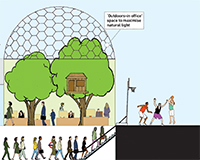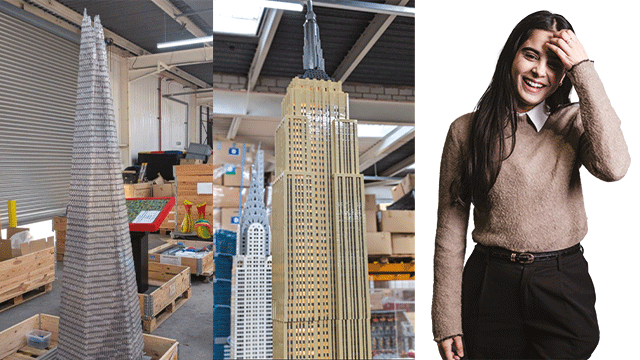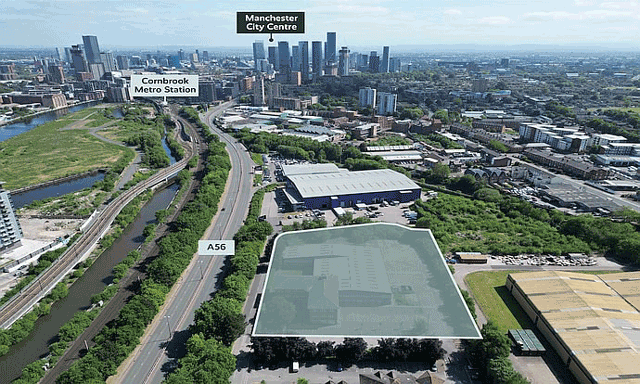The language of social science is increasingly heard in discussions on office design as advocates claim it is key to business success. Occupiers expect nothing less. Alex Genova reports on one of 2015’s defining trends. Illustrations Gary Barker
Arousal regulation. Psychosocial engineering. Presenteeism. Once these words were used to describe social behaviours. Then they began to creep into the vocabulary of the architects and interiors experts creating the latest trends in office deign. And now? Anyone involved in delivering commercial space should know what they mean.
The future, and indeed definition, of modern workspaces was one of the hottest topics of 2014. And such terms could offer some insight into what to expect next in 2015. The first hurdle will be translating them into something that the property industry understands. But ignoring them could prove damaging.
Panellists at last November’s EG Offices Summit highlighted modern office design as one of the most important contributors to productivity and staff retention. Office interiors, layout, design and functionality – and the terms used to get them right – are creeping up the list of occupier priorities. And this doesn’t just apply to start-ups making a bee-line for trendy spaces in Shoreditch. Traditional occupiers are increasingly looking for space that will entice and retain the best workforce.
David Rosen, partner at consultant Pilcher Hershmann, says: “People who assume it is only tech and media companies after modern, interesting offices are totally wrong. Corporates including legal firms, banks, and financial services companies also need to attract and retain young talent who no longer want to work in bland, dull spaces. Just look at the Buckley Building in Clerkenwell, EC1. A modern, trendy office space and one of its major tenants is Unilever. You don’t get much more corporate than that. And now chief executives are realising that – it has become a major priority. Not least because of the resulting positive impact on business and performance.”
So what is it commercial occupiers want? What terms are they using to describe their requirements? And, most importantly, what do those terms actually mean?
A matter of choice
First up -is choice. This is believed to be at the heart of the most productive office spaces. Psychologist and wellbeing specialist Mark Mill says: “Work performance is centred on a concept called arousal regulation, which is striking the balance between being aroused and being relaxed. This is down to the individual.- Some people are most productive in a frenetic environment, some need somewhere calm, so they need that choice.”
Leadership psychologist Averil Leimon adds: “An environment that has a lot of variety in it and has the latitude for people to pick and choose working spaces is the most productive.”
The Building Research Establishment addresses these varying work habits by breaking down workspace into sectors. The first sector is the office, the second is the home environment, and the third sector is any other space outside of these – for example a coffee shop – an increasingly popular office add-on. Michelle Pattison, director at CBRE and former agile workplace manager at Unilever adds: “The trend now is how businesses use their space efficiently to survive as work trends change. So creating that third space environment within the building itself – a space where people can interact – is key.”
Psychosocial engineering
This is all part of the wider trend of psychosocial engineering, where ‘lifestyle design’ must both incorporate employee health and engender creative thinking. An example of this on a grand scale is Pixar Animation’s head office in Emeryville, California, where the lavatories are deliberately placed in the centre of the building in the middle of a huge atrium. This was specifically designed so workers cross paths with all other departments. This psychosocial engineering is designed to encourage collaboration and connections through meetings that may not have otherwise happened.
Then there is the creation of a particular vibe and feeling through office design to ramp up productivity. The Collective, originally a start-up focussing on shared living space in London, launched its first co-working space in Bedford Square, WC1, last year.
Chief executive Reza Merchant turned a period mansion block into a series of rooms that feel more hotel than office. Merchant believes the relaxed boutique hotel-like setting makes potential investors more forthcoming in the boardroom.
“A more informal meeting space actually lightens the mood, people end up laughing and joking. Their guards are massively let down,” he says.
Merchant says this kind of fresh thinking is helping deliver what occupiers want from the ultimate office space – and therefore something developers should not dismiss: “Young companies can rent desks in small offices in a variety of spaces, and they tend to be more innovative in the way they are designed. They tap into they way people think and what they want.
“As a result, younger companies such as WeWork are increasingly able to compete with huge corporations like Regus – and their approach is completely different, it’s a lot more innovative and about a space which fosters creativity.”
Keeping staff happy is also essential. Charlie Vaughan-Lee, chief executive of Student Cribs, has created a home-from-home office space for his staff in an otherwise unattractive office block in Notting Hill.
Although the space is small, it has a shower room, large kitchen and New York-style bar area and even a laundry service for those who cycle in. “The majority of people’s time is spent in the workplace so if you have somewhere that is both beautiful and functional it sets a business apart,” he says. “It makes business sense to show employees they are being thought about and in return they are more willing to commit to the company.”
Next up – Well I never…
“Wellness”… A term that might raise a few eyebrows in the UK, but has taken the US by storm to the point where CBRE’s Los Angeles headquarters became the first commercial office space to receive WELLness certification in November 2013. The certification is based on features of a built environment that affect health and wellbeing. By its standards a healthy office should include features such as ergonomic furniture, lighting design that focuses on natural light and ultraviolet air disinfection.
CBRE’s LA office’s design was recognised thanks to its “challenge of the conventional workspace paradigm” by offering something different to the grey, corporate office spaces that populate most of America. Occupying a glass atrium on the top floor of a multi-storey building, there are no assigned offices or workspaces, instead ‘zones’ and ‘spatial experiences’ dominate – meaning maximum worker collaboration and choice.
And if anyone should need convincing of the powers of a ‘healthy’ building then the man who founded the WELLness certification – former Goldman Sachs partner turned New York-based developer Paul Scialla – insists that it can both attract and retain the best people in the war on talent: “It’s a small investment in your people relative to other fixed costs for employers, with potential tremendous returns, regardless of the size of the company.”
But can wellness and social engineering really have a marked effect on productivity and employee satisfaction? How good is it for business?
Boosting success
Pilcher Hershmann’s Rosen insists the impact can be huge: “People working in an inspiring space could see their productivity increase tenfold. They will naturally work better in a creative, interesting space than in a bland, raised-floor, sealed box. And this is just as relevant for bankers as it is for start-ups. Coutts has always had an interesting building, Goldman Sachs has plans for an amazing new space in Farringdon. Young people in all sectors are well-connected so they know what it is like to work at Facebook, Google and Skype. They are likely to have friends who work there as these companies also take on the brightest and the best. No-one wants to be the person working in the dull 1960s office block anymore.”
Then there is the power of branding. Beyond the health benefits, lifestyle design that reflects a company’s personality can also boost its success. Rebecca Pearce, head of sustainability at CBRE, says: “For a company that’s focused on brand and wants employees to keep in touch with consumers it’s absolutely core that the brand is part of the interior environment.”
A sense of individuality and delivering something new certainly seems to come naturally to smaller creative companies, but Student Cribs’ Vaughan-Lee believes the larger corporates will follow suit. “Corporate businesses are getting tired of their unimaginative spaces and are starting to realise they can have something organic without losing what their brand is about.”
While smaller companies are reaping the benefits of enterprising office spaces, tech companies like Google and Facebook – with a stake in both corporate and creative worlds – are providing the gateway for more conventional giants to follow in their footsteps – towards a more arousal regulated world.
Out of the ordinary offices around the world
AUSTRALIA
“Australia leads with innovation as they have a healthier lifestyle generally, with activity-based working, and therefore different approaches to workspace. Work has an equal share with lifestyle, so they would naturally expect more of an enjoyable experience.”
Victoria Lockhart, Arup
What they do best
The emphasis is on an active lifestyle. Many pioneering office designs in Australia will have gym facilities, wellness facilities, or classes such as yoga and aerobics. Exercise will be incorporated into the day’s work for most Australians and this is reflected in the office space.
Hot trends
The geographical space means big ideas are made reality. Bold statements such as large open entrance halls are trending in Melbourne at the moment; visitors and staff get the impact of a company’s intentions as soon as they walk through the door.
AMERICA
“Most of America is very conservative and traditional in its office environment but pockets such as San Francisco and LA have made a big move in trying to be more sustainable and forward-thinking. And, unlike
Europe, America has the geographical space to start from scratch and do something really innovative from the outside in.”
Rebecca Pearce, CBRE
What they do best:
Silicon Valley is still at the forefront of making lifestyle design an all-encompassing experience for the employee. The tech industry’s large campus buildings have a big emphasis on design as a way of life where the brand’s image is inescapable. Everything an employee could need is provided for by the company without staff having to leave the office.
Hot trends:
America is leading the way in terms of environmentally friendly office spaces. The trend at the moment is incorporating sustainable materials within the lifestyle design and the WELLness certification (the first of
which was given to CBRE headquarters in LA) reflects this.
CONTINENTAL EUROPE
“Continental Europe has a clearer work/life balance than the UK or US, so lifestyle is more at the forefront. For example in Germany, having access to natural daylight and operable windows are almost a mandatory requirement.”
Ann Marie Aguilar, Arup
What it does best:
Wellbeing and health are favoured in continental Europe and because of the generally moderate weather, most offices are able to take advantage of natural sources of airflow, rather than relying on air conditioning.
Hot trends:
Collaborative working environments are trending in Europe, and this is facilitated through the breakdown of traditional walls. Instead, transparency is favoured and glass partitions and workspace dividers allow more collaborative work, while also allowing that all-important natural light to flood through.












